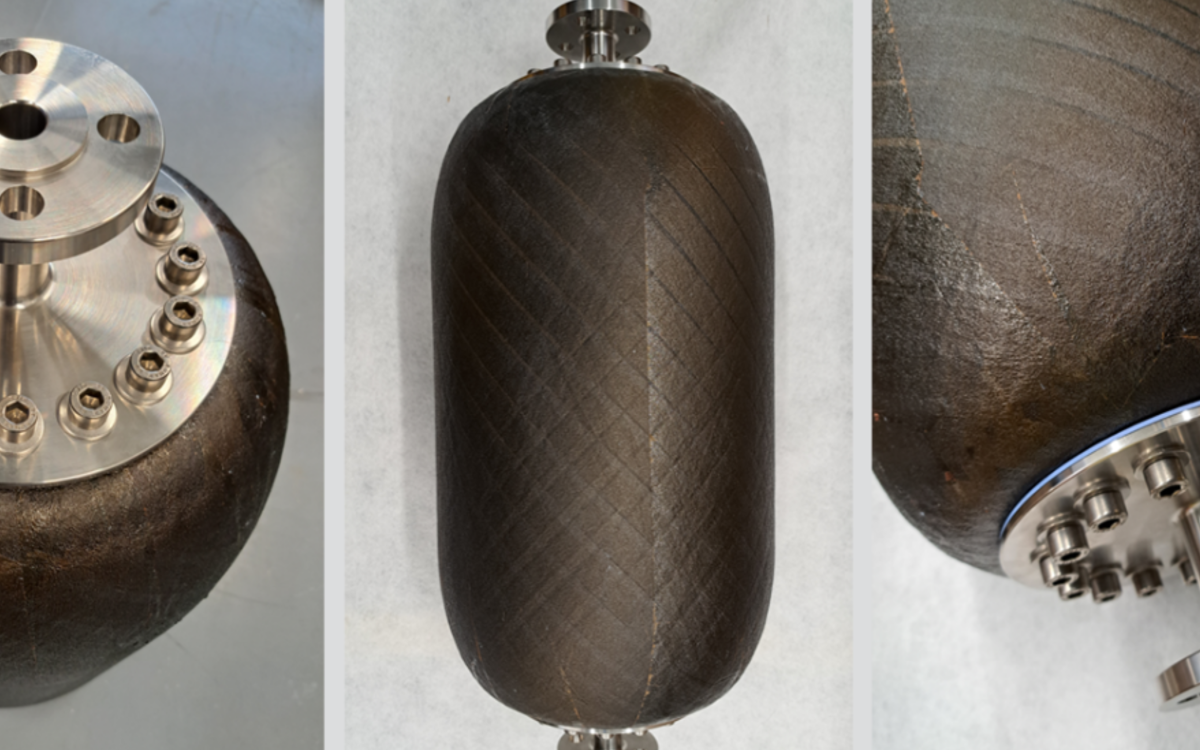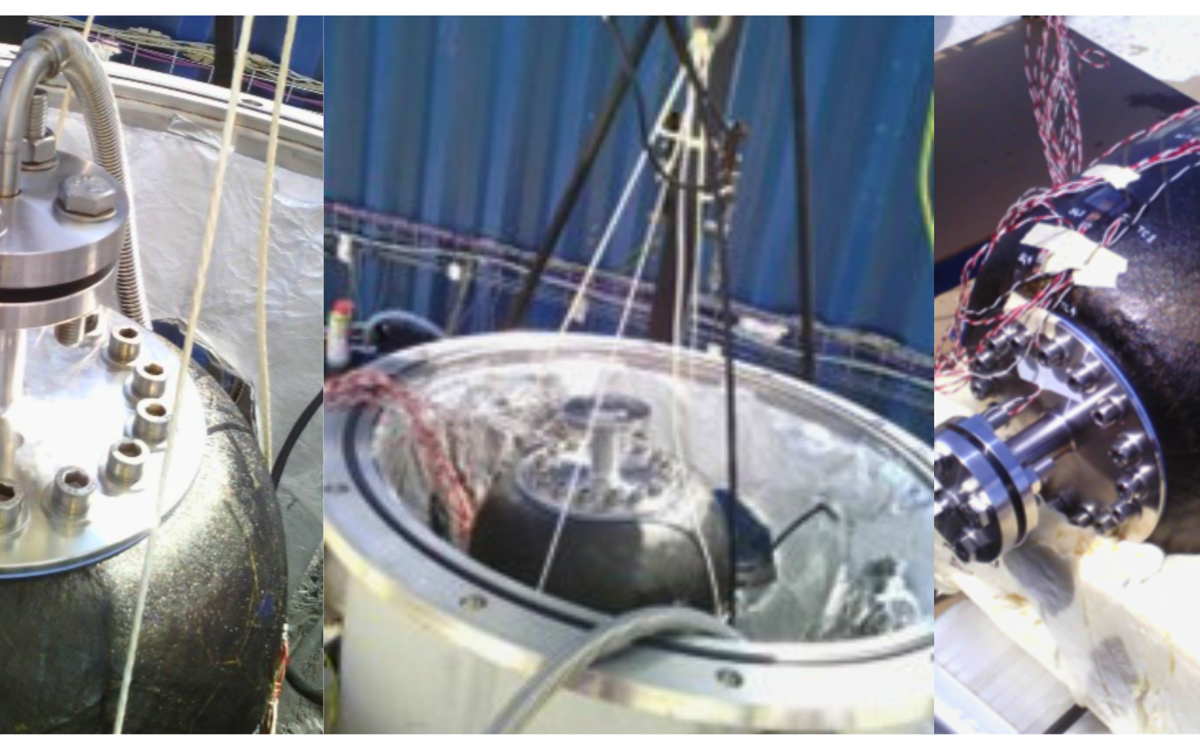
National Composites Centre advances cryogenic storage systems for flight-worthy tanks
The National Composites Centre (NCC) has tested a range of composite cryogenic storage tanks with liquid hydrogen that it has designed and manufactured. Considered one of the first composite cryogenic hydrogen storage tanks that has been designed, built, and tested in the UK, this forms part of the company’s journey in developing expertise in this area, to support the UK’s transition to the hydrogen economy.
Challenge
Renewable hydrogen is expected to be an alternative fuel solution for several industries, including aerospace. With the target to reduce aviation’s CO2 emissions to net-zero by 2050, liquid hydrogen (LH2) is a key part of meeting this objective. However, while three times lighter than jet fuel, LH2 is difficult to store, requiring: four times more volume than jet fuel; low pressure of ∼ 10 bar; stored at -253 °C, and kept cold for the duration of the flight.
To be viable, the commercial hydrogen aircraft would need their fuel tanks to be as light as possible, filled and emptied numerous times (high number of thermal and pressure cycles) and last for several decades.

Innovation & Results
Undertaken with Filton Systems Engineering (FSE), the NCC’s tank-testing programme used a liquid hydrogen vacuum test chamber and cryo-rated testing instrumentation. Tank performance was closely monitored throughout the testing to compare performance against models, with the tanks successfully maintaining full integrity.
Two tanks were tested using liquid hydrogen; one of a single piece construction and one of a split piece design, to assess viability for the design and manufacture of large tanks. The tanks were 30 litres in capacity, designed for a pressure of 8 bar, and manufactured using automated fibre placement on-site at the NCC. The tanks comprised only a single skin to contain the liquid hydrogen and were mounted within a vacuum chamber at FSE’s test facility to provide insulation.

The one-piece tank was subject to 10 thermal cycles of being emptied and re-filled with liquid hydrogen, up to a pressure of 1 bar, followed by a single pressure cycle up to 7 bar. The two-piece tank underwent 10 pressure cycles from 0 to 7 bar at LH2 (-253°C) temperature. The results have enabled model validation, with further cycling subsequently undertaken at FSE to test alternative end boss designs using the same composite tank.
These results build on previous successes with the NCC’s UK-based composite cryogenic storage tank testing programme and concepting tools. Composites design expertise is critical to achieving long life cryogenic storage tanks, to overcome some of the potential limitations of composite material formulations.

Impact & Next Steps
The UK hydrogen economy could be worth £900 million, creating over 100,000 high quality jobs by 2050. The NCC is enabling the hydrogen opportunity by developing advanced technologies for the safe, practical, and cost-effective storage and distribution of hydrogen.
In addition to advancing cryogenic storage systems for flight-worthy tanks, this includes invested research into the development of pressure vessels, from reducing development costs to improving recyclability; and developing smart pipes for hydrogen transportation.
NCC’s in-house capabilities include a pressure test system, a Filament Winder, Thermoplastic Pipe Winder and cryogenic test method.
Ongoing work with the Hydrogen Innovation Initiative and the National Hydrogen Skills Alliance is actively readying both UK’s supply chain and future workforce to capitalise on this.
Marcus Walls-Bruck, Head of Hydrogen Technologies at the National Composites Centre said:
“Our results and novel methods developed will enable rapid advancement within the UK, building fundamental understanding of the challenges in designing and manufacturing cryogenic tanks. This is a significant step forward in the UK goal to develop capability in designing and manufacturing hydrogen powered aircraft of the future.”

